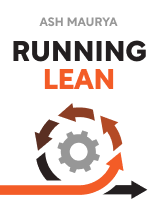

This article is an excerpt from the Shortform book guide to "Running Lean" by Ash Maurya. Shortform has the world's best summaries and analyses of books you should be reading.
Like this article? Sign up for a free trial here.
What are the best strategies for developing key performance indicators and using them effectively? In business development, what is the role of key performance indicators in optimizing your business model?
Developing key performance indicators (also known as KPIs) is the starting point for monitoring the growth of your company. Using key performance indicators gives you a data-driven approach to keeping track of your company’s success.
Learn about how to develop and use key performance indicators that are appropriate for your business.
Developing KPIs: What Metrics Count?
Hypothesize three to five key metrics that will help you measure the progress and success of your business model. Ash Maurya, the author of Running Lean, suggests that you prioritize outcome metrics over output metrics for a more accurate evaluation. Outcome metrics gauge the results you achieve, measuring the actual outcomes of your efforts. In contrast, output metrics focus on the actions you take without capturing the tangible results of those actions.
Example: Instead of focusing on output metrics like the number of emails sent or features developed, you intend to track outcome metrics that measure the results you achieve from your efforts. These metrics include your customer acquisition rate, conversion rate from free to premium accounts, average revenue per user, and customer lifetime value. Developing key performance indicators works best when you have revenue in mind, not just progress.
| Use the OKR System to Identify and Track Your Metrics In Measure What Matters, John Doerr argues that the key to identifying useful outcome metrics is to identify your OKRs—objectives and key results. Follow this four-step process to implement the OKR system in developing KPIs: 1) Define your company’s overall goal: This is your vision of where you want to be in the next five years. It needs to be clearly defined and action-oriented. For example, generate annual revenue of $500,000. 2) Identify individual objectives: Every individual within your various departments and teams needs to identify their objectives. The objectives they define for themselves must align with the company’s main objective. For example, your sales colleague might set an objective to acquire X number of customers by the end of the year. 3) Define your key results: Your key results must be measurable sub-goals towards achieving each objective. They need to include specific results and deadlines. To identify your key results, ask yourself, “What steps do I need to complete to reach my objective?” For example, your sales colleague’s key results might be to increase online sales by 5% every month, increase offline sales by 10% every month, and so on. 4) Regularly check progress: Checking the progress of each key result provides valuable insights that will help you to stay on track—it helps you assess the effectiveness of your current strategy in using key performance indicators and provides an opportunity to revise or update your key results. The frequency of your check-ins depends on the length of time needed to achieve each key result. |
Using Key Performance Indicators: How to Test Effective KPIs
Making constant improvements to the way you operate allows you to optimize your business model for growth. Maurya emphasizes the importance of conducting regular short-term tests to achieve this optimization while developing key performance indicators. These tests serve as checkpoints to efficiently identify and address weaknesses, allowing you to continually refine your strategies for long-term sustainability and profitability.
He suggests the following five-step process for conducting short-term tests:
1) Launch your product and monitor your key performance indicators to identify areas of weakness that hinder your growth. Pinpoint one specific weakness that significantly impacts your growth trajectory. For example, you may discover that your payment system is the weakest area, leading to a high percentage of customer abandonment during check-out. (Shortform note: Sean Ellis and Morgan Brown (Hacking Growth) suggest you can identify weaknesses by using data analysis tools to track everything users do throughout the entire product experience. Start tracking users from initial contact with your marketing and throughout the sales funnel. Extend this tracking to encompass product usage patterns, preferred features, and usage frequency. Using key performance indicators is more effective when your data analysis is thought out well.)
2) Identify the factors that might contribute to this weakness. For example, for your productivity app, potential factors could include a complicated user interface, limited payment options, or slow transaction processing. (Shortform note: It can be challenging to pinpoint why a weakness is happening. Try looking at it from a different angle—asking solution-oriented questions is an effective way to reframe your thoughts and surface blind spots. For example, instead of asking, “Why are so many customers abandoning their carts during check-out?” ask, “What three improvements might motivate customers to finalize their purchases?” Developing key performance indicators allows you to target these questions more precisely.)
3) Generate multiple solutions to address the weakness. Explore various approaches and focus on finding the simplest yet most effective solution. For example, you might implement a more intuitive user interface, integrate additional payment gateways, or optimize the transaction processing speed. (Shortform note: Boost your ability to generate numerous, diverse solutions by setting a daily goal for the number of ideas you’d like to come up with. Track your progress using a spreadsheet or similar tool and regularly measure your achievements. This approach will force you to continuously come up with ideas rather than waiting for inspiration to strike.)
4) Implement a single solution for a defined period of time and test its effectiveness in addressing the weakness. Focus on obtaining quick feedback and insights. For example, you could conduct A/B tests by offering different versions of the payment system to different segments of your user base. Developing KPIs allows you to directly compare two different versions in an A/B test using the same metrics. (Shortform note: Many experts believe random control trials (RCTs) offer more accurate results than A/B tests. According to Matthew Syed (Black Box Thinking), an RCT involves establishing a control and introducing a variable to measure its impact against the control. For example, to test a new landing page, compare the performance of your current page, the control, with the new experimental design.)
5) Review the outcomes of the test and evaluate whether the implemented solution successfully resolves the weakness or if further refinement is required. Use the insights gained in developing key performance indicators and putting them to use to iterate and improve your approach, ensuring continuous progress toward optimization. (Shortform note: You’ll find it easier to complete this evaluation process if you create a comprehensive record of your testing process. This involves systematically recording your insights throughout the testing process, capturing both successful outcomes and unexpected results. You’ll then be able to analyze patterns and make informed decisions about whether the solution requires adjustments or a different approach.)
| Advice on Optimizing Your Business Model after Developing Key Performance Indicators While Maurya’s approach to growth optimization is to focus on testing and iterating your business model, Josh Kaufman (The Personal MBA) suggests that the best way to optimize for growth is to make sure your business operations are as efficient as possible. According to him, you first need to understand all of the tasks that your business relies on. Consider your product or service and write down all of the steps it takes to: Create it: This includes designing, manufacturing, and ensuring quality control. Market it: This includes your branding and media campaigns. Process orders: This varies depending on whether you deal directly with your customers or use intermediaries to handle your orders. Deliver it: This depends on the nature of your product or service and whether you’re reliant on distribution channels to fulfill your orders. Follow up on it: This includes providing customer support and troubleshooting problems. Once you’ve outlined all of the tasks involved in running your business, consider how you can make incremental improvements to save time, effort, and money. Kaufman suggests considering ways to: Streamline tasks: This might include automating some of the tasks or eliminating unnecessary tasks. Cut costs while maintaining quality: This might include cutting intermediaries out or changing suppliers. Improve processes: This might include investing in resources such as equipment or more employees. Finally, Kaufman suggests prioritizing the improvements that will make the biggest difference to your efficiency and profits. By developing key performance indicators, you will have a better idea of where these improvements might need to be. |

———End of Preview———
Like what you just read? Read the rest of the world's best book summary and analysis of Ash Maurya's "Running Lean" at Shortform.
Here's what you'll find in our full Running Lean summary:
- The reason why so many business models fail
- Why you should never assume you know what your customers want
- Why your business should be built on continuous validation and iteration






